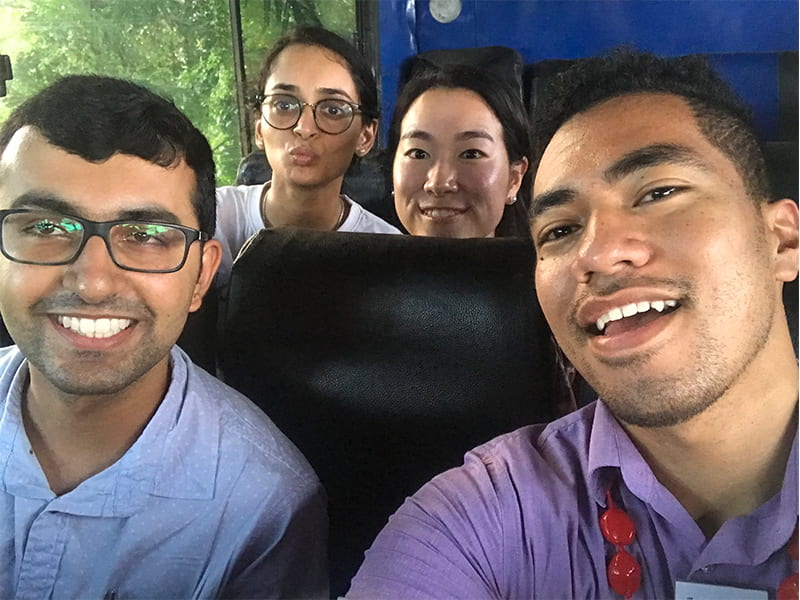Image: Amosa (at right) with fellow students in Fiji
For my second university placement I was given the opportunity to attend a medical camp with an organisation called Sathya Sai International (SAI). Like “Doctors For You”, this international organisation is involved in many projects. In particular they provide various health services to under-privileged communities who are unable to access care in regional areas.
Every year SAI gather together volunteer clinicians and non-clinicians to Fiji. These volunteers include doctors, optometrists, physiotherapists, dentists, pharmacists, and students who help cook and clean for the camp, and assist the clinicians and student clinicians in many other ways. The medical camp runs over 6 days. The organisation will take the group to various villages across Fiji – sometimes travelling as far as 2 hours from the main city centres. These villages have poor access to health services and so they are always incredibly grateful when they see overseas help coming to them.
This year I attended the camp with Jason, Kamal, and Yesom. Our supervisor was Keaton Daya, an optometrist who graduated about 10 years ago and has been attending the camps every year since becoming a registered optometrist. Apart from the five of us, we also had Shiv Singh (a local boy whose father’s business supports the SAI organisation) and Emily Davey (a year 13 student). Shiv was our dispenser and VA-measurer and Emily our receptionist.
As a lot of the villages we attended were rural areas, many of the people could only speak a limited amount of English. We found ourselves quickly trying to grapple with Fijian and Fijian-Hindi but we were able to communicate using a combination of spoken and body language, including hand gestures.
One of the biggest things I achieved from this trip was becoming more confident in performing low-vision style refractions. This style of refracting speeds things up quite a lot as it involves using large steps of flippers with the appropriate lens changes. I am a lot more comfortable now with this work and less concerned about using big refraction steps when a person has heavily reduced vision.
by Amosa Lene
